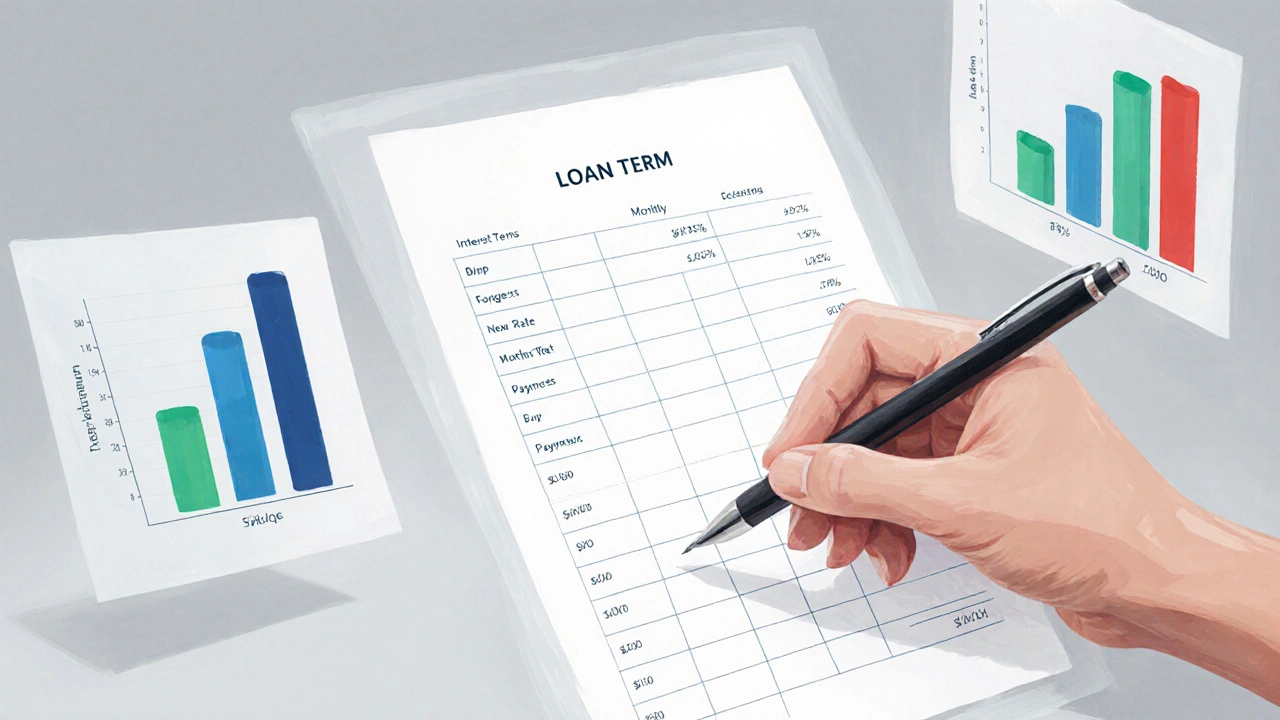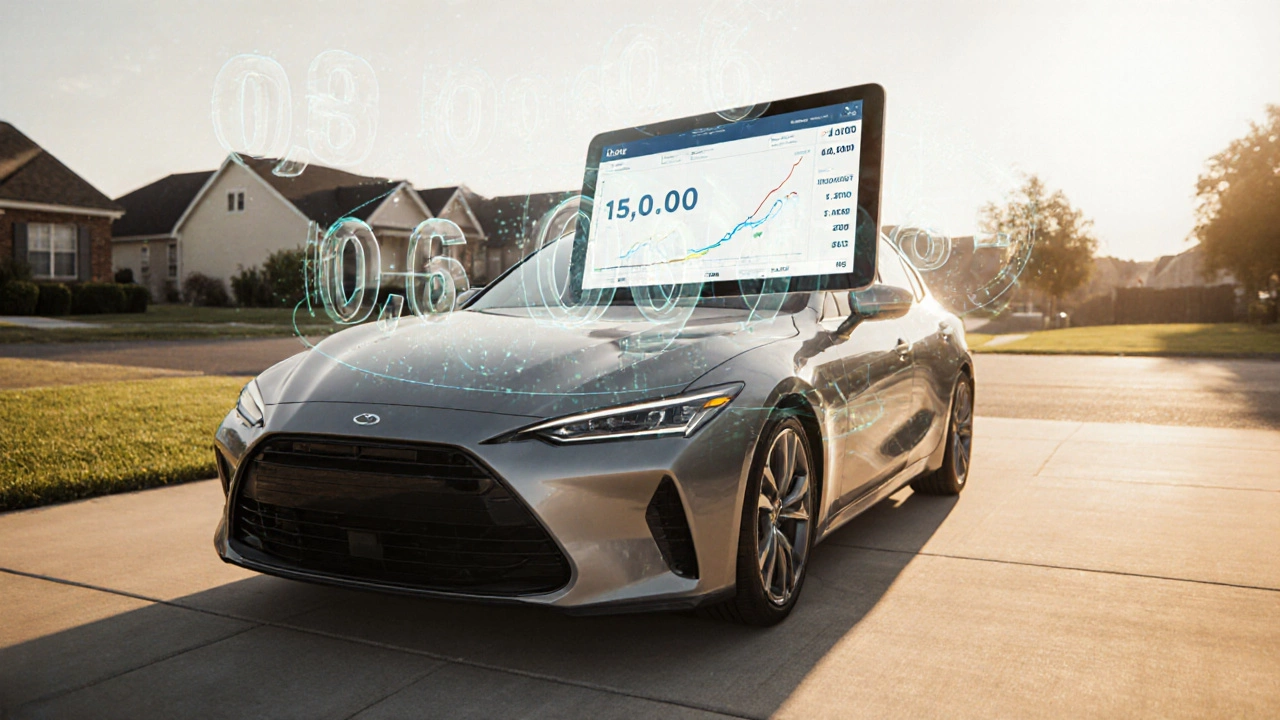Car Loan Payment Calculator
Calculate Your Monthly Payment
Results
Monthly payment: $0.00
Total interest paid: $0.00
Total amount paid: $0.00
Based on $15,000 principal with $0 down payment
Wondering how much you’ll actually pay each month for a $15,000 car loan? The answer depends on three main factors: the interest rate, the length of the loan, and any down‑payment or fees you add in. Below you’ll find a step‑by‑step guide, real‑world examples, and a quick‑reference table so you can see the numbers instantly.
Key Takeaways
- Monthly payment = (Principal × Monthly Rate) ÷ (1‑(1+Monthly Rate)^‑N)
- A lower interest rate or a shorter loan term dramatically reduces the total cost.
- Adding a down‑payment cuts the principal and can also lower your rate.
- Use an online calculator to test different scenarios before signing.
- Watch your credit score - a higher score often secures a better rate.
What Exactly Is a Car Loan?
Car loan is a type of personal financing that lets you borrow money to buy a vehicle, then repay it in monthly installments over an agreed period. Lenders-banks, credit unions, or dealership finance departments-provide the cash, and you agree to a schedule of payments that includes both the principal amount and interest.
Breakdown of the Numbers That Matter
Before you plug anything into a calculator, understand the key pieces of the puzzle:
- Principal is the amount you actually borrow, in this case $15,000 minus any down‑payment.
- Interest rate is the annual percentage charged by the lender. It’s expressed as an APR (annual percentage rate) and can vary from 3% to 10% or more depending on your credit score.
- Loan term is the number of months you agree to repay the loan, commonly 36, 48, 60, or 72 months.
- Down payment lowers the principal and often helps you qualify for a better rate.
- Monthly rate is the interest rate divided by 12 (the number of months in a year).
Step‑by‑Step Formula
Once you have those numbers, the standard amortization formula does the heavy lifting:
Monthly Payment = (P × r) ÷ (1‑(1+r)⁻ⁿ) where: P = principal (loan amount after down‑payment) r = monthly interest rate (annual rate / 12) n = total number of payments (loan term in months)
The result is the amount you’ll see on your bank statement each month.

Example Calculations
Let’s run a few realistic scenarios. Assume you put $2,000 down, leaving a $13,000 principal.
| Interest Rate (APR) | Loan Term (months) | Monthly Payment | Total Interest Paid |
|---|---|---|---|
| 4.0% | 36 | $381.93 | $741.48 |
| 4.0% | 48 | $292.12 | $1,020.00 |
| 6.5% | 36 | $397.61 | $1,314.96 |
| 6.5% | 60 | $255.48 | $1,328.80 |
| 9.0% | 72 | $221.92 | $1,578.24 |
Notice how a 2‑year loan at 4% is cheaper overall than a 6‑year loan at 9%, even though the monthly amount looks lower. The longer you stretch the loan, the more interest you’ll pay in total.
How Your Credit Score Impacts the Rate
Credit scores typically fall into three buckets:
- Excellent (740+): lenders often offer 3‑4% APR.
- Good (670‑739): you’ll see rates around 5‑6%.
- Fair/Bad (below 670): rates can climb to 8‑10% or higher.
Even a one‑point improvement can shave a few dollars off each payment, so it pays to check your score before you apply.
Tips to Reduce Your Monthly Car Loan Payment
- Increase the down‑payment. Every extra $500 reduces the principal and the interest you’ll owe.
- Shop for the lowest APR. Get quotes from at least three lenders, including credit unions which often have better rates.
- Choose a shorter loan term. While the monthly amount goes up, the total interest drops dramatically.
- Consider a co‑signer. A co‑signer with strong credit can lower the rate for both parties.
- Pay extra when you can. Even a $20 extra each month can cut years off a 5‑year loan.
Common Pitfalls to Avoid
- Focusing only on the monthly figure. A low payment can mask a high total cost if the term is too long.
- Ignoring fees. Origination fees, documentation fees, and early‑repayment penalties add to the total cost.
- Skipping the insurance factor. Lenders often require comprehensive coverage, which can raise your monthly out‑of‑pocket cost.
- Assuming the advertised rate applies to you. Rates are usually quoted for borrowers with excellent credit.
Using an Online Car Loan Calculator
Most bank websites and auto‑finance portals offer free calculators. Input the principal, APR, and term, and the tool instantly shows the monthly payment, total interest, and even a printable amortization schedule. If you’re comfortable with spreadsheets, the same formula works in Excel or Google Sheets using the PMT function:
=PMT(annual_rate/12, number_of_months, -principal)
Plugging 4% APR, 36 months, and $13,000 into the function returns $381.93 - exactly the figure from our table.
Quick Checklist Before Signing the Loan
- Confirm the APR and whether it’s fixed or variable.
- Verify the loan term and monthly payment.
- Ask about any hidden fees or pre‑payment penalties.
- Make sure the down‑payment amount is reflected correctly.
- Check that your credit score was the basis for the quoted rate.
Frequently Asked Questions
How many months will a $15,000 loan last?
Typical loan terms range from 36 to 72 months. The exact length depends on the lender and your preference for monthly payment versus total interest.
Will my credit score affect the interest rate?
Yes. Higher scores usually qualify for lower APRs, which can shave hundreds of dollars off the total cost of a $15,000 loan.
Is it better to finance through a bank or a dealership?
Banks and credit unions often offer lower rates, but dealer financing can be convenient and may include promotional rates for new‑car purchases. Compare both before deciding.
Can I pay off a car loan early without penalty?
Some lenders charge an early‑repayment fee. Always read the contract; if there’s a penalty, calculate whether the interest saved outweighs the fee.
How does a down‑payment change my monthly payment?
A larger down‑payment reduces the principal, which directly lowers the monthly payment and can also earn you a better APR.
